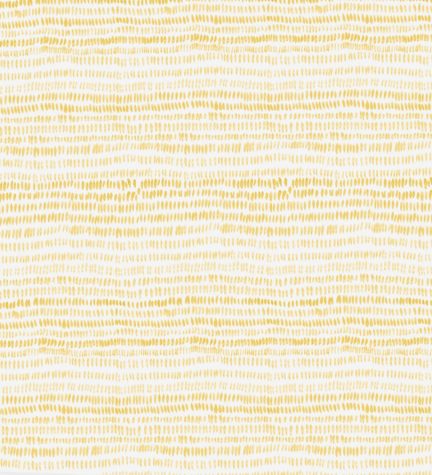Hello, Sunshine!
Soft, buttery yellows add a cheerful feeling to interiors.
A color so delicious you could eat it, butter yellow is a sweet antidote to dreary days. “Since Maine skies are gray for a good part of the year, soft yellow provides some needed relief,” says Jeanne Handy, the principal of Jeanne Handy Designs in Portland, who often pulls her palettes from nature. While Maine decorators famously love blues, Handy notes that “a little yellow warms things up.”
No matter what the season, this shade of yellow brings freshness and cheer to a room—an instant dose of sunshine—without overpowering the space. A versatile hue, creamy yellow also suits both modern and traditional settings. “Soft, buttery shades of yellow are among the easiest to incorporate into a color palette,” says textile designer Rebecca Atwood, who is the author of the book Living with Color. Here’s how to use these light yellows to bring subtle cheer to any room, from a light-filled kitchen to a cozy guest room.
Add yellow where you need warmth.
Yellow’s effect on a room depends on the shade and how it’s used, says Bronwyn Huffard, the principal and lead designer of Huffard House in South Portland. But, she says, “You can count on yellow to add warmth.” When a client wanted to capture the brightness of summer in a bedroom, Jennifer Morrison of Morrison House Design in Windham used yellow upholstery and bedding, noting the warm yellow is like “the bright sun hitting your face.”
Break up a blue scheme.
“Lots of clients come to me loving blues and greens,” says Handy. “I love cool colors, but at times they need some yellow—a little relief from all the coolness.” Handy says there is something about yellow in particular that gives a much-needed lift while still letting the cool hues be the focal point.
Think of colors in trios.
Soft yellow can easily connect with hues that fall together on the color wheel: a pretty peach can bridge between yellow and rose; soft yellow looks lovely beside sage and pale blue. You can also play with three saturations of a single hue: buttery yellows create a color connection between white and deeper golden yellows.
Layer your yellows.
“Pair buttery shades with brighter yellows,” suggests Atwood. “This blend will help the brighter shades feel softer.” You might pair soft yellows with ochre, mustard, or goldenrod; Atwood has also paired soft yellows with apricot in her textiles.
Use soft yellow as a backdrop.
Huffard says that soft and muted yellow can act as a calming neutral and is particularly nice on bedroom walls. A yellow that borders on rich cream feels elegant and traditional in hallways and living rooms.
Take color cues from the coast.
Atwood, who hails from Cape Cod, loves a beach-inspired palette, especially in a New England interior. She likes yellow mixed with linen, warm grays, peach, blue, and neutrals, a palette she says is “reminiscent of stones on the beach.”
Play up existing accents.
You may already have more yellow in your home than you realize, Atwood points out. Brass hardware, gold frames, and blonde woods all have yellow undertones and read as yellow when you are building a color palette. Use yellow accents to complement these existing elements.
Mix yellow with other colors.
“Yellow almost always looks lovely with gray and blue,” says Huffard. “There’s a lot of blue in Maine, between the sea and sky, and yellow is a beautiful complement to blue.” Handy also loves the combination of soft yellow and gray. “It’s unexpected, but yellow enhances most gray tones,” she says.
Tread carefully with walls.
Morrison cautions to think carefully before using yellow on the walls. “You have to be very calculated with this one,” she says. “[Yellow] can actually cause stress in some people.” Morrison prefers to use green as a backdrop and add yellow through fabrics, but if you want yellow walls, steer pale and test your color thoroughly before committing, to make sure the hue gives the room a sunny cast without overwhelming it.
Is Yellow a “Happy” Color?
Color psychology is notoriously a soft science, but certain colors have long-held associations with particular moods or feelings. Color has even infiltrated our lexicon of emotions: when we are sad we say we’re “feeling blue,” or if we’re full of joy we might say it’s a “golden day.” Yellow is often considered a happy hue, but is there any science to back that up? There have been very few studies testing whether yellow does in fact make us happy. However, in one 2010 study, researchers from the University Hospital of South Manchester in England asked study participants (309 of whom were considered healthy and 218 considered depressed or anxious) about their color associations. When asked to pick the color that reflected their mood, healthy participants selected a shade of yellow, but depressed ones overwhelmingly chose gray. Speaking to CNN for their Colorscope series, Leatrice Eiseman, the executive director of the Pantone Color Institute, said that in Pantone’s word-association studies “yellow” was consistently associated with words like “sunshine,” “warmth,” “cheer,” “happiness,” and even “playfulness.” Even if it’s not scientifically proven, all signs point to the fact that yellow does make us smile.









